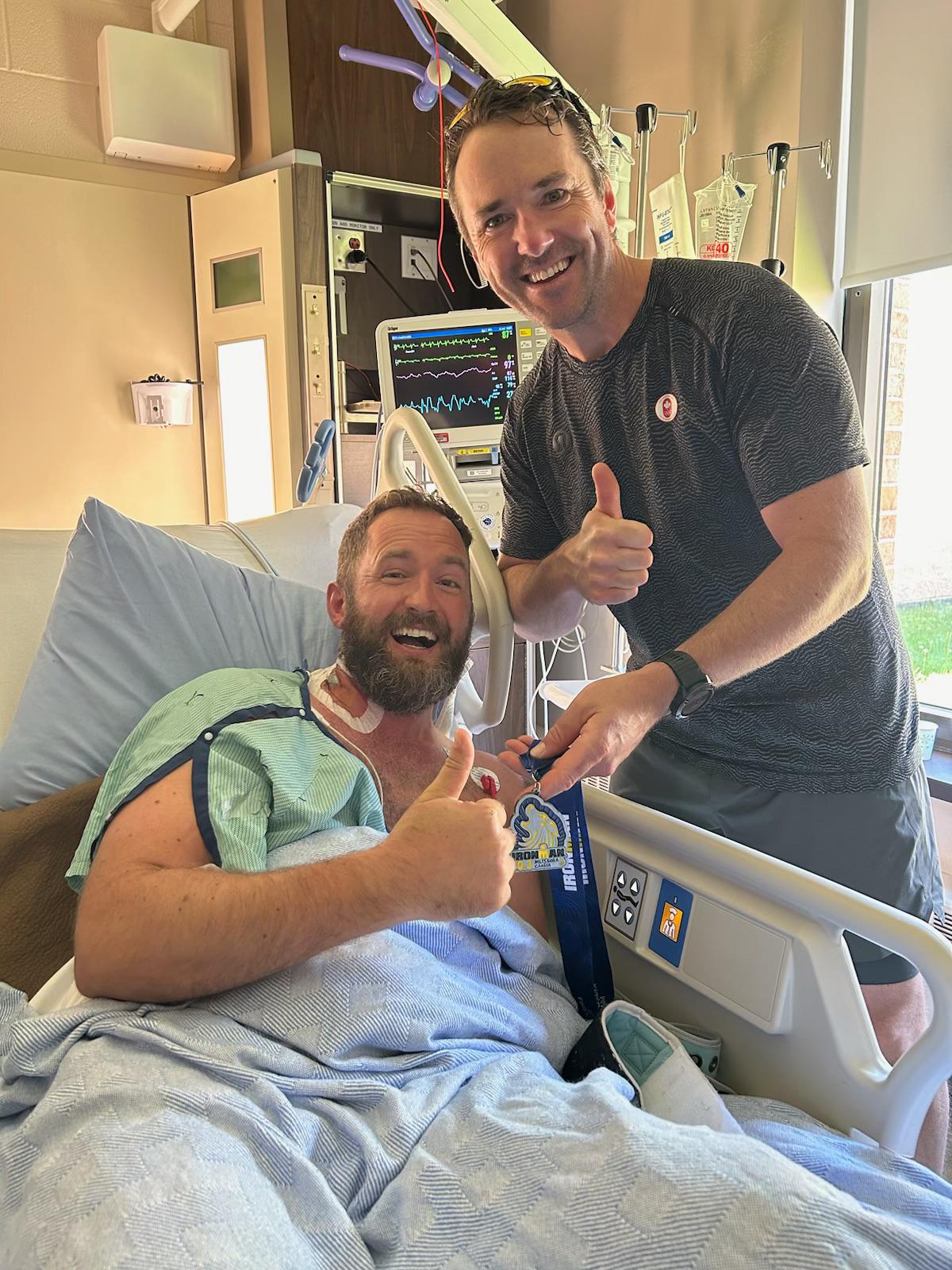When you hear the word resilience in ultrarunning, you might think of grit, miles and mental toughness. But for Chris Metaxas, resilience took on a much deeper meaning after a serious health scare almost forced him to give up the sport altogether.
In this interview, FLOWBIO’s Performance Nutritionist, Inés, sits down with Chris to talk through the turning point that changed everything. From collapsing at the finish line of a race, to uncovering a hidden hydration issue, to completing one of the world’s toughest ultramarathons feeling stronger than ever.
What follows is a story of recovery, reinvention, and why guessing your hydration strategy is no longer good enough.
In the world of ultrarunning, resilience is everything. But for Chris Metaxas, resilience meant more than just enduring miles and mountains - it meant returning to the sport after a serious health event that nearly ended it all.
 THE BEGINNING OF THE END.
THE BEGINNING OF THE END.
Last summer, while running a half-marathon leg of an Ironman relay, Chris crossed the finish line and collapsed. He had been unknowingly suffering from severe sodium depletion, which left him hospitalised and unconscious for over a day.
“I was in a coma for 27 hours,” Chris recalls. “It was one of those moments where you realise how fragile performance and health really are.”
What followed wasn’t just recovery, it was reinvention. Determined to understand what went wrong and how to prevent it from happening again, Chris turned to FLOWBIO.
THE TURNING POINT.
Like many athletes, Chris had always assumed he understood hydration: drink water, maybe add a few electrolytes, and keep moving. But after the incident, he began looking deeper and found FLOWBIO.
“I was introduced to FLOWBIO through a bike shop in Mississauga,” he said. “I knew I couldn’t keep relying on guesswork. I needed to know exactly what my body was losing.”
What the FLOWBIO sensor revealed surprised even Chris: a much higher rate of sodium loss than expected, and significant variation in sweat rate depending on intensity and climate. His assumption of losing about a litre per hour was far off.
“I was massively underestimating both how much I was sweating and how much sodium I was losing, especially in the heat,” he said. “That realisation changed everything.”
TRAINING WITH A STRATEGY, NOT A GUESS.
With data from FLOWBIO’s sensor and planner tool, Chris began adapting his hydration and fuelling approach. During training in hot and cool conditions, he started to see how dramatically his losses changed.
“In Arizona, for a 50k race, I followed the hydration and sodium plan exactly, and for the first time, I didn’t feel wrecked at the finish,” he said. “I wasn’t cramping. I wasn’t depleted. I was ready for more.”
Chris worked closely with the FLOWBIO team to use the planner during long runs and training blocks, adjusting for weather and duration. The goal: prepare for the ultimate test - the Cocodona 250.
250 MILES, 12.000 METRES OF CLIMBING. ONE PLAN THAT WORKED.
The Cocodona 250 is one of the most demanding ultramarathons in the world: 250 miles across the Arizona desert with over 12,000 metres of elevation gain. It’s a multi-day event where weather swings from freezing to scorching, and the margin for error is razor-thin.
Chris had registered for the race before his health scare. But this time, he came in with a very different plan.
“Using the FLOWBIO planner, we broke the race into segments. Daytime hydration was almost double what I needed at night,” he said. “Having that plan and knowing it was based on real data meant I didn’t have to second-guess myself. I just executed.”
The result? Chris finished the Cocodona 250 in the top 10% of the field, feeling stronger and more stable than ever.
“I WAS PASSING PEOPLE IN THE FINAL MILES”
What stood out most wasn’t just the result - it was how Chris felt during the race.
“I had this moment, near the end, where I realised: I wasn’t suffering. I wasn’t in that 'death march' phase I’d been through in other races,” he said. “I was hydrated, my sodium was dialled in, and I actually had the strength to pass other runners.”
Even more remarkably, Chris reported a near-complete disappearance of symptoms he had associated with long ultras: muscle cramping, deep fatigue, and heat-related dizziness.
“I even noticed things like frequent urination, which is a good sign! It meant my body was absorbing and circulating the fluids properly.”
BEYOND THE FINISH LINE: RECOVERY AND HEALTH
Chris's hydration strategy didn’t just support performance, it accelerated his recovery.
“Five days after the race, I was out running 15 kilometres with friends. I even went hiking in the Grand Canyon and mountain biking in Sedona. I never would have imagined that after a 400-kilometre race.”
And he’s clear: none of this would have been possible without understanding his sweat.
“This wasn’t just a performance tool - it was a safety tool. It gave me peace of mind. I don’t think I could have done this race without it.”

ADVICE FOR OTHER ENDURANCE ATHLETES
When asked what he’d tell other athletes, Chris doesn’t hesitate:
“Don’t guess. Even the best sports drinks don’t give you everything you need. FLOWBIO helped me see just how much sodium I was really losing—and how little I was replacing.”
His final message?
“Whether you’re racing or just training, know your body. Know your sweat. It might save your race, and your health.”
➡️ Buy the FLOWBIO Sweat Sensor HERE! ⬅️


Share:
FLOWBIO Joins Forces with Ultra X and Science in Sport to Redefine Personalised Hydration
Getting Started with FLOWBIO's Supplements & Consumption feature